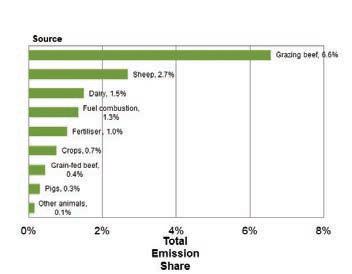
4 minute read
New products and services
Next Raptor arrives
The Next-Generation Ford Ranger Raptor is incoming and features a 3.0-litre V6 Twin Turbo EcoBoost engine producing up to 292kW (392hp) at 5650rpm and 583Nm of torque at 3500rpm.
The 3.0-litre V6 petrol has a compacted, graphite-iron cylinder block, which is around 75 per cent stronger and up to 75 per cent ‘stiffer’ than the iron used in traditional castings, according to Ford.
Raptor’s anti-lag system – available in the vehicle’s Baja2 mode – keeps the turbochargers spinning for up to three seconds after the driver backs off the throttle, allowing for faster resumption of acceleration out of corners or between gears when the driver gets back on the accelerator.
Mated to a 10-speed automatic transmission – each gear is programmed with its own boost profile.
An electronically controlled active valve exhaust system amplifies the engine note in four selectable drive modes (Quiet, Normal, Sport and Baja2).
Drivers can choose their preferred engine sound by pressing a button on the steering wheel, or by selecting a drive mode that uses one of these settings.

Smart field option
Bayer has announced that it will be launching its digital farming platform, FieldView, in Australia. Bayer says the platform will enable Australia’s cotton and cereal farmers to work smarter, by combining expertise and knowledge of the land with modern, digitally-enabled tools.
The decision follows two seasons of working with growers across Australia to beta-test FieldView in local conditions and ensuring the platform is suited to the specific needs of Australian growers.
Bayer’s Head of Digital Farming ANZ, Chris Staff, said enhanced digital capabilities will support Bayer’s efforts to help Australian farmers gain a deeper understanding of their operations, allowing them to collect, visualise and analyse data they are generating on their farm to make more informed decisions. “Digital farming integrates detailed information on factors such as weather conditions, soil moisture, soil nutrient levels and crop health to improve on-farm decision-making, leveraging application technology and data science to maximise efficiency and productivity,” Staff said.
Be guided
Grain growers are urged to consider their disease management plans for winter crops, using Agriculture Victoria’s 2022 Cereal Disease Guide.
Produced with support from the Grains Research and Development Corporation (GRDC), the guide provides updated information on crop disease ratings and advice on how to reduce the risk from disease.
Agriculture Victoria senior research scientist, Dr Grant Hollaway, said an example of a disease that will be important this season is stripe rust, which can cause significant yield losses in wheat.
“There will be disease carry over on volunteer cereals growing over summer due to recent above average rainfall,” Dr Holloway said.
Dr Hollaway recommends using the tablet-based app StripeRustWM, to support in-crop fungicide decisions.
The app is free for iPad and Android tablet users and can be downloaded from the Apple App or Google Play stores. More details: https://agriculture. vic.gov.au

Hay buyout
AgTrade’s livestock nutrition division, ThriveAgri, has acquired Hay Australia.
Responsible for approximately 10 per cent of Australia’s 1.35 million tonnes of hay exports last year, Hay Australia’s operations in Victoria and Western Australia source from producers to provide a premium product range to dairy, beef and equine customers – in both domestic and international markets.
AgTrade chief executive officer, Justin Slaughter, said adding the business to the AgTrade portfolio would broaden ThriveAgri’s reach across animal nutrition and present new opportunities to both producers and buyers of hay products.
Slaughter said Hay Australia would have opportunities to leverage AgTrade’s half a century of trusted partnerships in livestock industries, while also supplying hay to its own portfolio of livestock, genetics and meat supply chains.


Lentil leader
The lentil breeding program at the Grains Innovation Park in Horsham, Victoria will receive a revamp thanks to a significant investment from Agriculture Victoria and the Grain Research and Development Corporation (GRDC).
The new investment adds to a longstanding commitment by the GRDC to support research, development and extension (RD&E) into lentils.
Over the past decade, the GRDC together with research partners, have invested $16 million in the Pulse Breeding Australia (PBA) lentil breeding program, which has delivered nine varieties with improved yield and a better fit for southern farming systems.
Additional investment into lentil agronomy has seen lentil production in Australia increased from 196,000 tonnes in 2011 to over 500,000 tonnes in 2021, with an estimated annual farmgate value of $350 million.
Agriculture Victoria senior research scientist, Dr Garry Rosewarne, said the latest investment partnership with GRDC was welcomed by the research team as an opportunity to continue creating new and improved lentil varieties for growers.
Regional comms boost
Telstra and TPG Telecom have announced a 10-year regional MultiOperator Core Network (MOCN) commercial deal which should improve mobile phone coverage for regional areas.
Under the deal, which is yet to be approved by regulators, TPG Telecom will gain access to around 3700 of Telstra’s mobile network assets, increasing TPG Telecom’s current 4G coverage from around 96 per cent to 98.8 per cent of the population.
Telstra will gain access to TPG Telecom’s spectrum across 4G and 5G networks, which will allow it to grow its network and increase capacity.
For Telstra customers, the additional spectrum will ensure regional and rural customers should now experience faster speeds and less congestion in more locations on their mobiles.
Under the MOCN arrangement Telstra will also share its Radio Access Network (RAN) for 4G and subsequently 5G services in the defined coverage zone, however both carriers will continue to operate their own core network where key differentiating functionality resides.











